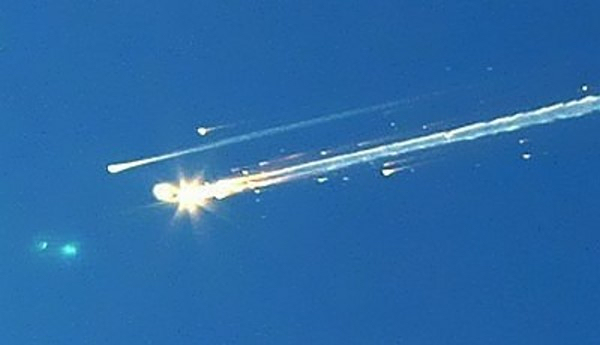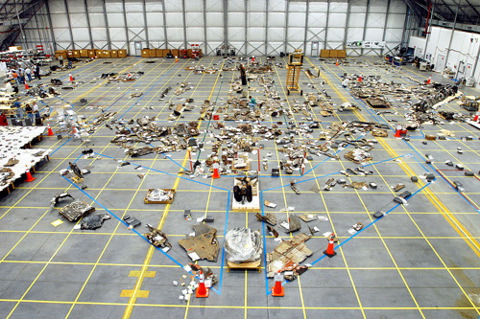In Isaac Asimov’s groundbreaking science fiction Foundation series of novels, the idea of the “Seldon Crisis” is introduced, named after the fictional character, Hari Seldon. In the far flung future, pure scientific application is able to accurately predict future events through mathematical calculations of all possible variables, a science known as “psychohistory.” Seldon is thus able to predict key historical moments in future history, which become known as “Seldon Crises.”
Psychohistory
An extension of Marx and Engels’ dialectical materialism, the Seldon Crisis requires two independent, and sometimes apparently unrelated, dialectics to interact: an internal pressure and an external pressure, which come to boil simultaneously, triggering a massive historical event that forever changes the course of history relative to the event. In the Foundation books, “psychohistory” calculations are so exact, that the predicted events cannot be altered because every attempt to alter them has already been calculated. And so the Seldon Crisis is always inevitable, even when people know enough to stop it.
Put into practical terms, looking backwards, this theory can be used to explain key events in world history that have occurred, such as World War II and even 9-11. Of course it’s easy to do this in retrospect. “Psychohistory” of the future is pure science fiction.
Knowing full well we do not live in Asimov’s science fiction world, I nevertheless often say AS9100 is facing a coming Seldon Crisis. The reason is that we have all the factors in play, and coming to a head:
Internal pressures:
- IAQG / RMC leadership continues to push internally-developed ideas of aerospace quality management, such as the PEAR, without basing them on known good practices or industry consensus.
- IAQG goal of “90% of the supply chain certified” is mathematically impossible, unless rules for certification are dramatically diluted and lower-quality organizations are granted certification.
- Conflicts of interest between clients and certification bodies, and between certification bodies and their accreditation agencies, dilute proper oversight of AS9100 certification, allowing subjectivity, favoritism and revenue to influence certification decisions.
External pressures:
- Aerospace primes and other large companies are not happy with the results of AS9100 certification, and continue to demand improvement in quality corresponding with the certifications issued.
- Growth in private space industry creates a conflict between “old space” companies that sit on AS9100 development committees, and new private space companies who are disallowed from participating.
- Growth in unaccredited AS9100 “certificate mills” increases the number of “fake” certificates in the wild.
- Declining interest in ISO 9001 in general leads to backlash against mandated certifications, including AS9100.
- Pace of current aerospace development, especially by private companies, may lead to dramatic failures and loss of life.
And here is the formula for a Seldon Crisis: the combination of these pressures is, more than ever, likely to mean that an AS9100 certified organization will be responsible for a massive aviation or aerospace disaster, on par with the shuttle disasters… or worse. This will drive questions from the public and media as to what AS9100 means, forcing IAQG and certification bodies to fall back on the defense of “it’s just a sample” — an argument that will not only be rejected by the public as a cheap dodge, but also result in collapse of confidence in AS9100 entirely.
- Create constancy of purpose for improvement of product and services – AS9100 aims for this slightly, through requirements for a Quality Policy and continual improvement. This is often under-implemented, however.
- Adopt the new philosophy – this is covered to some extent in AS9100, but also typically under-implemented. This leads to QMS’s which exist in parallel with a company’s normal operations, invoked during audits, rather than fully embedded. AS9100 auditor training does not seek to root this out.
- Cease dependence on mass inspection – AS9100 is still very much inspection based.
- End the practice of awarding business on price tag alone – AS9100 says nothing about this, and as a result price is still one of the top factors, especially among some of the aerospace primes on the official IAQG committees.
- Constantly and forever improve the systems of production and services – this is addressed, but difficult to assess and enforce.
- Institute modern methods of training on the job – AS9100 currently still relies on 1950’s notions of training.
- Institute modern methods of supervision and leadership – AS9100 says nothing about leadership and supervision, and the upcoming ISO 901:2015 standard does not improve on this either. The standard still invokes a top-down, command and control mentality that does not take into account how leadership or supervision should be assessed against outputs to see if it is effective.
- Drive out fear – the command and control approach of AS9100 increases fear, as do mandates for certification from aerospace primes. Third party certification activities routinely create fear, and third party auditors are not held to accreditation rules out of fear of reprisal by clients.
- Break down barriers between departments – AS9100 does not address this at all, and allows for continued compartmentalization of organizations.
- Eliminate numerical goals for the work force – AS9100 actually demands numerical goals, going so far as to require them for on time delivery and product quality. Even ISO 9001 does not go this far.
- Eliminate work standards and numerical quotas – see point 10. ISO 9001/AS9100 also demands process control by numerical work standards.
- Remove barriers to pride of workmanship – AS9100 does nothing to address this.
- Institute a vigorous program of education and training for everyone – see point 6. AS9100 does not require training “for everyone” and does not consider education at all. Standard 1950’s style “OJT” can be implemented and fully comply with AS9100.
- Create a structure in top management that will push every day on the above 13 points – not required by AS9100.
If Asimov is to be believed, there’s nothing one can do. The Seldon Crisis is fixed. But let’s hope that is the science fiction part of the story, and remain positive — if naive — and present a possible way to avoid this disaster.
Since ISO 9001 is unlikely to change in any meaningful way in the next 20 – 25 years, it becomes the job of IAQG, as stewards of AS9100, to take the reigns. Here’s what needs to happen:
- Decouple from ISO 9001. ISO is becoming an anchor preventing the suitable update of quality management standards. AS9100 must become a standalone product, no longer tied to ISO 9001.
- Open AS9100 standards development to the full aerospace community; abandon control by aerospace primes.
- Replace the core “quality management principles” currently used in ISO 9001 (and thus AS9100) with those more aligned with Deming. Abandon the command and control structure, and work towards truly bilateral mutually-beneficial supplier relationships. Adopt requirements for leadership and management that are not based on top-down mentality, but which empower and embolden workers at all levels.
- Define the clauses of the standard in clearly phrased statements of requirements, including non-binding examples. Include a rationale statement (also non-binding) for every clause, to explain the rationale of the authors.
- Consider a maturity model approach that allows for different grades of AS9100 maturity.
- Get rid of the goddamned PEAR. Ensure audits include objective evidence of conformity, not just process assessments.
- Trademark the term “AS9100” (rename it if it’s too late to do so.) License its use only to approved trainers, consultants, auditors, CB’s and AB’s. This will effectively destroy the “certificate mill” market and improve the performance of consultants.
- Abandon the ridiculous “90%” goal for industry certifications.
- Hold CB’s responsible when defects are discovered; require them to investigate. Aggressively suspend or withdraw CB’s whose clients regularly fail to meet requirements.
- Introduce an independent third party assessment of AB’s via a separate council specifically dedicated to the task, populated by both industry experts and laypeople.
- Increase audit days.
- Increase audit fees.
- Open OASIS to gather feedback from all possible stakeholders, and the public.
- Create permanent interfaces with NTSB so that ABs, CBs and IAQG participate in accident investigations of AS9100 certified organizations.
These controls should help push the next Seldon Crisis disaster far into the future, saving human lives, as well as improving the validity and standing of AS9100 internationally. It will also ensure that if the Seldon Crisis is encountered, every level of the AS9100 hierarchy will be involved in investigations, reviews and assessments so that changes can be made, and appropriate parties held responsible, to avoid future disasters.
Photo credits: Corbis, Getty Images, NASA
Christopher Paris is the founder and VP Operations of Oxebridge. He has over 35 years’ experience implementing ISO 9001 and AS9100 systems, and helps establish certification and accreditation bodies with the ISO 17000 series. He is a vocal advocate for the development and use of standards from the point of view of actual users. He is the writer and artist of THE AUDITOR comic strip, and is currently writing the DR. CUBA pulp novel series. Visit www.drcuba.world











